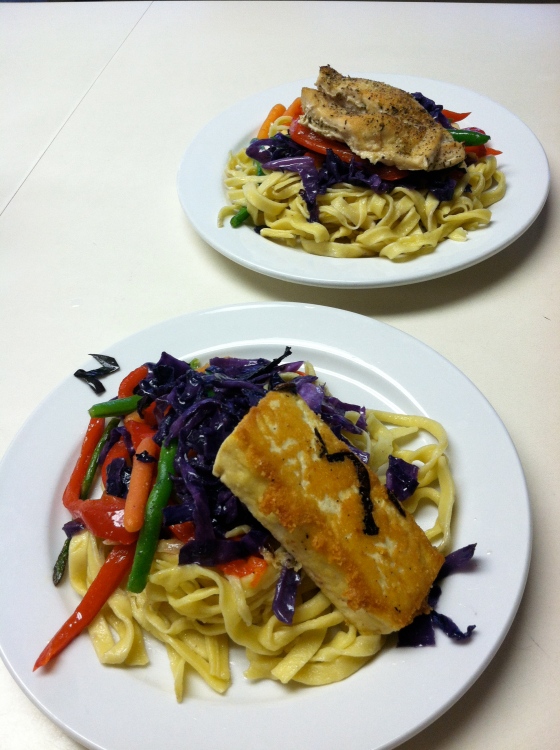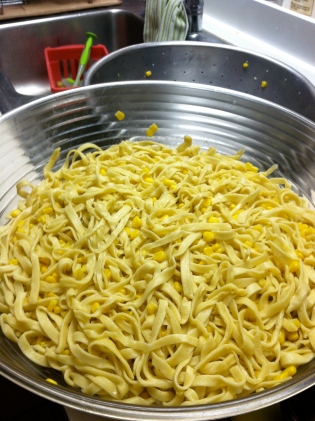
Culinary Art Therapy
By: emotionalarcheology
Tags: food, italian grandparents, lesley college, potato dish, restaurants, shaun mcniff
Category: Art Therapy
| Aperture: | f/2.8 |
|---|---|
| Focal Length: | 3.85mm |
| ISO: | 80 |
| Shutter: | 1/0 sec |
| Camera: | iPhone 4 |
When I was in grad school at Lesley College, now University, our Core Group used to meet at night sometimes at our Professor’s place. We all used to bring some kind of food to eat while we worked. I was lucky enough to be in Shaun McNiff’s Core Group and I will always remember what he said to me one night when I brought my spinach and potato calzone. I’m sure he wouldn’t remember, but I do. He said I should be a food therapist. I learned to make this spinach and potato dish from my grandmother and my father. It is a simple dish made of sliced potatoes and fresh spinach sautéed in garlic and live oil, and it was one of my father’s favorites. I remember him telling me that when he was in the service in Germany, he asked his mother to make it and send him some. It was what he missed from home. I tuned it into a portable meal, adding parmesan and wrapping it in dough.
I was working in a good restaurant on Charles Street in Boston called Rebecca’s at the time, cooking my way through grad school. I am part Polish and part Italian, with amazing cooks on both sides of the family, and I paid attention. My Polish grandfather was in fact a cook/chef who worked in many restaurants and finally owned his own neighborhood tavern where he cooked his hot dogs and sauerkraut in beer. He died when I was three, but I may have inherited some skill. The first oil painting I ever made I gave to my great-grandmother, my Baci, and to thank me, I was invited to Sunday dinner. It was just her, my Uncle Alec and me, sitting at her small kitchen table by the window. She made “Glorified Stew”, which was a casserole of small, individual meat loaves, carrots and potatoes, in a lovely, silky gravy. On every major holiday, which for us was Thanksgiving, Christmas, and Easter, we ate at my Italian grandparents house in Waterbury, CT. My father always made the antipasto, and it was a composed still life worthy of photographing. I could go on for a good long time describing those family food events, in fact I may do just that in a follow-up posting. Creating food was (and is) so important to me that upon graduation, I became a caterer and a restaurateur for many years before I returned to my training.
We don’t call it comfort food for nothing. Certain hormones are released when we are under emotional stress, and that hormone also happens to stimulate our appetite. We feel all warm and cozy when we smell Grandma’s chicken soup cooking, or run into a dish that reminds us of some sweet time in our life. Food is nourishment, comfort, and the fulcrum we have experiences around.
So one day, when an adolescent client asked if she could do individual art therapy with me but she wanted to do it in the kitchen, I was delighted and well prepared to provide that kind of therapeutic intervention. Since then other girls have asked to cook with me and I have happily obliged. Our program is grounded in a Relational approach to therapy, so cooking together is tailor-made for this process. We have created some fun and fabulous meals and served them to the community at dinner. We give the nourishment and receive appreciation in return. The clients who cook are proud of themselves and learn valuable life skills. Our adult program does this on a daily basis, rotating the clients into the role as cook. Our adolescents have daily high school class and homework responsibilities, so their time is more limited, but we do rotate them into the kitchen as helpers as part of aKitchen/Hearth program. When they work with me they help create a meal from start to finish, and see it served and enjoyed along with the rest of the community.
Here we have created handmade pasta and turned it into a lovely Primavera and paired it with a Chicken Piccata for the omnivores and a Tofu Piccata for the herbivores. I worked with the vegetables while my two sous chefs worked with the pasta machine. I was impressed with their results, as pasta can be very tricky and sticky. We all felt very good about our work, and the girls felt the pride of accomplishment. The community was happy and content as well. This sense of fulfillment came to us through the experience of making food together, in relationship.



I wanted to know what schooling I need to become a culinary therapist.
I didn’t get any specific therapeutic training to do this. I was trained as an art therapist and an art teacher, and cooked my way through grad school in Boston in the 70’s early 80’s. I then worked in catering an restaurants for several years. My clinical training in expreseive therapy combined with my cooking skills made it easy for me when a client asked to work with me in the kitchen instead of the art room. Food was her passion. It is a great idea as a specific modality. All of our residents work with a milieu counselor in charge of the ‘Hearth’ where I work. Feeding yourself and others is a key to our Relational way of working therapeutically. Get trained as a psychotherapist and learn to cook by taking classes in the culinary arts as well. You could have the right skills when an opening in a facility like I work in comes up.
The way working with food found me was very organic. If you are a trained therapist, especially an Expressive Therapist, the food is just another type of media. You work with it in the same way. If you are looking for advanced training, I would suggest looking at Art Therapy or Expressive Therapy graduate programs. I went to Lesley University and studied under Shaun McNiff. I highly recommend Lesley. I don’t know of any programs or publications on Culinary Therapy per se. There is always this format for dialogue.
Hello.
I’m so thrilled to stumble upon this blog! I am trained as a therapist and have just graduated grad school. I was recently reminded of how passionate I am about food and I am now committed to combine the two. So far it seems like a very unpaved way but that has been exciting to me!
My questions are many haha. The most important though is do you have any resources that you would recommend to me pertaining to culinary arts as a form of therapy? Online, books, video ANYTHING! If you would be willing I would love to speak to you about how you develop programming and how you organize it. It would mean a lot. Thank you so much for your time.
Sincerely,
Crystal S
Is there any research that underpins Culinary Art Therapy specifically?
I am unaware of any texts on ‘culinary therapy’. I think of food as a different art media. One can make beautiful still lives and sculptures out of this media, and then it is consumed. The Relational piece between the therapist and the client is the healing factor that is in play through the culinary relationship. There is a sense of pride and accomplishment after a productive and creative ‘session’. Energy is moved through the client, conversation is organic and emerges from a natural rapport, and perhaps memories are stimulated through the sense of smell and stories of childhood that are connected through food. Another important element of creating food is that it is something you do for other people. My mother-in-law always said she make her special dinners with ‘her heart and her hands’, and therapist often counsel their clients to ‘do for others’ as a way to help themsleves. Feel free to continue this conversation with me if you wish. I appreaciate the comment and hope I have been helpful.